Investment
First Republic Bank Stock: Why I Am Sticking To My Investment (NYSE:FRC)

|
|
Anne Czichos
A couple of things have happened to First Republic Bank (NYSE:FRC) since I submitted a contrarian call to buy the community bank’s shares about two weeks ago. FRC stock has whiplashed ever since and the bank has seen significant deposit outflows in the days following the bank failure of Silicon Valley Bank. A series of 8K disclosures were meant to reassure investors that First Republic Bank has sufficient liquidity to manage a heightened level of deposit outflows, but investors have chosen to bet against the bank and they clearly expect the worst to happen. I continue to believe that First Republic Bank is not at risk of going out of business and that the common stock potentially offers very risk-tolerant investors triple-digit return potential!
Risk control and asymmetric upside potential
To account for extraordinarily high levels of volatility in the financial market, I have chosen to take a very small position in First Republic Bank: FRC accounts for just about 1.05% of my investment portfolio which chiefly consists of non-financial stocks. Given the asymmetric risk profile that I see with brutalized community banks, I believe investors could earn multiples of their investment here… if fears subside and confidence returns to the community banking sector. However, there is a chance that First Republic Bank might be shut down or be forced to do a highly dilutive capital raise which would likely seriously impair the remaining value of the equity. Therefore, investors must recognize that there is the potential to lose the entire investment if things turn south.
Liquidity update, estimated deposit outflows and 8K disclosures
Since my last call to consider FRC in the midst of the banking bloodbath, shares of First Republic have revalued lower by about 60%. However, the bank has made a number of 8K disclosures throughout the banking crisis that were meant to inform investors about the strategic actions the community bank has been taking.
It all started with an 8K disclosure dated March 12, 2023 in which First Republic Bank announced that it secured additional liquidity from the Federal Reserve Bank and JPMorgan Chase & Co which brought its unused liquidity to a massive $70B. Undoubtedly, huge deposit outflows forced the company to bolster its cash position.
Just days later, on March 16, 2023, First Republic Bank announced that eleven lenders banded together and deposited a combined $30B into the bank (8K source) in order to signal confidence in First Republic Bank’s liquidity situation. This move also failed to calm investors and the lender’s shares have continued to sell off since.
Additionally, last week, First Republic Bank announced that a number of executives have agreed to reduce their annual bonuses to zero for 2023 while others have forfeited vesting all performance-based incentives (Source). The latest 8K, dated March 22, 2023, was meant to instill confidence in the bank yet again and align shareholder and executive interests. Since shares continued to fall last week, it is safe to say that the latest measures have not yet had a positive effect on investor sentiment.
FRC’s business banking business and recent news about deposit outflows
What was First Republic Bank’s strength before the crisis, its banking business, has become its major weakness. The bank’s focus on venture banking — taking in deposits from venture capital-backed companies and making loans to them — has revealed an unforeseen vulnerability after Silicon Valley Bank shut its doors. The key problem with SVB was not deteriorating credit quality, but rather that the bank was forced to liquidate its bond portfolio at a significant loss in order to fund deposit outflows. Most banks now have unrealized investment losses, according to JP Morgan, including First Republic Bank… which is not a big issue of these assets don’t have to be sold. Additionally, FRC’s capital position is not necessarily much worse than those of other community banks.
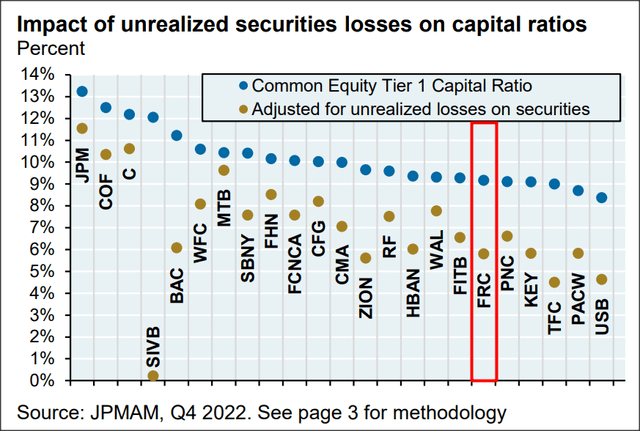

Source: JP Morgan
A potential solution to the crisis
Since First Republic Bank has a considerable focus on business clients — 63% of its deposits came from its venture banking business which are at a higher risk of leaving the bank due to the FDIC’s $250,000 insurance limit — the bank has seen considerable deposit outflows. The bank said in its 8K disclosure for March 16, 2023 that “daily deposit outflows have slowed considerably” which is also what U.S. officials have remarked on lately. About 79% of First Republic Bank’s deposits were uninsured as of the end of FY 2022. Before the crisis, First Republic Bank’s business deposits were growing steadily and according to the bank’s Q4’22 update, the bank had exceptionally good credit quality, too.
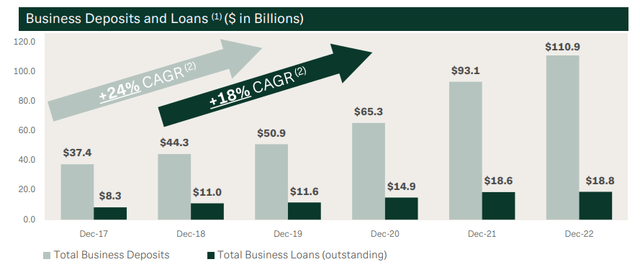

Source: First Republic Bank
However, my guess is that the bank will sell a portion of its loan book in order to raise cash which would the best solution for First Republic Bank, and certainly preferable over an equity raise. The bank owned $166.9B in loans at the end of the December-quarter which mostly were collateralized by real estate. I can see FRC selling a portion of its loans at a fair price to larger banks in a big to shore up its balance sheet.
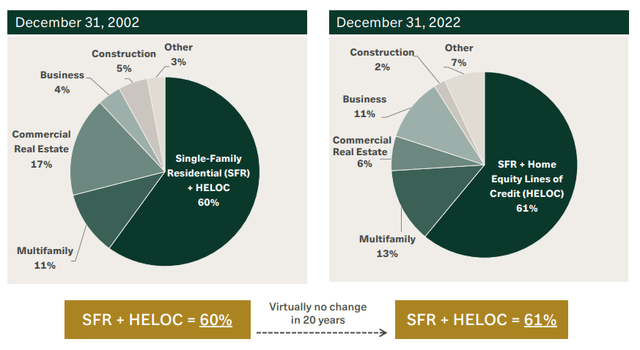

Source: First Republic Bank
First Republic: Deposit losses and impact on valuation
First Republic Bank is by far the worst performing community bank, largely due to its high percentage (79%) of uninsured deposits and the need to raise $30B in additional deposits from other companies.
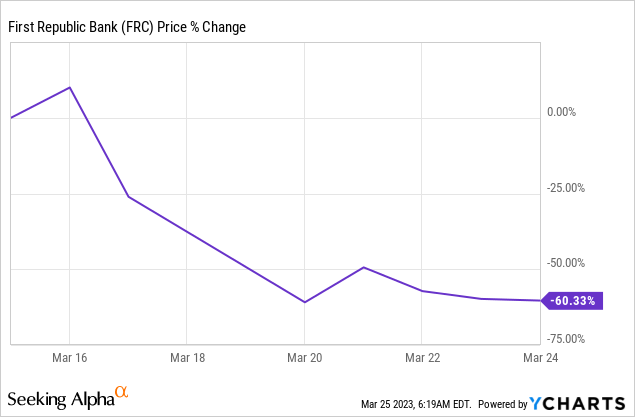

It is impossible to know precisely at this point how many deposits First Republic Bank has lost, but the Wall Street Journal, citing insiders, said the bank has lost about half of its deposit base, which would calculate to about $70B.
This means that FRC is also going to report at a significant decline in its book value in Q1’23. First Republic Bank reported a book value of $75.38 at the end of FY 2022. Assuming a 50% decline in book value, chiefly due to deposit outflows and a shrinking balance sheet resulting from the crisis in the financial sector, FRC may report a BV around $37-38 per-share at the end of the first-quarter. Of course, more aggressive assumptions about deposit losses would translate into even higher book value declines. A, say, 60% decrease in cash/deposits implies, roughly speaking, a 60% decline in book value… which could put the Q1’23 BV closer to $30 per-share. Since First Republic Bank’s shares are trading at $12.36, the valuation implies an 84% discount to BV. If deposits indeed declined by 60%, then the valuation may more accurately reflect a 59% discount to book value.
FRC offers by far the biggest book value discount and therefore also has the highest perceived risk. However, fear clearly is present here and investors may overestimate the decline of FRC’s deposit base.
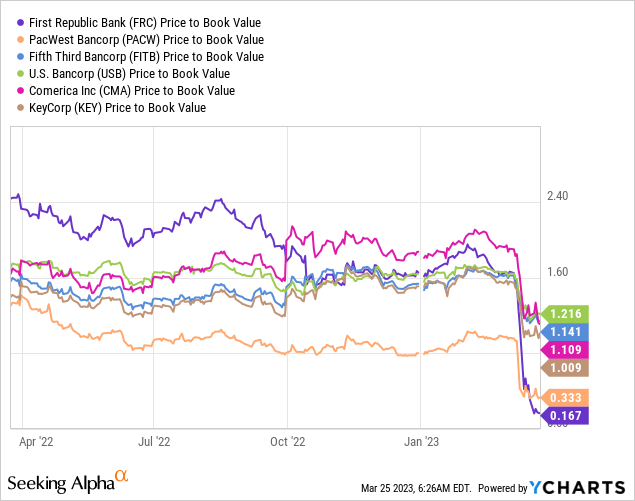

Risks with First Republic Bank
If deposit outflows continue, the big banks might decide that it is a better idea to convert the $30B in deposits into equity, which of course would heavily dilute shareholders. First Republic Bank has enough liquidity, in my opinion, through the Bank Term Funding Program, the FED’s discount window and other banks, so I don’t believe the bank couldn’t fund incremental deposit withdrawals. What would change my mind about FRC is if the company would have to liquidate (a portion of) its bond holding portfolio and realize losses, or if the bank would do a dilutive equity offering.
Final thoughts
First Republic Bank remains a high-risk, high-potential rebound stock in the community banking market, despite the stock being down dramatically since I took my initially position more than a week ago. The reason why I am sticking to my guns here is that I consider it highly unlikely that the FED will allow fear and panic to spread in the financial market as it has learned the lessons from 2008 financial crisis. This lesson is that failing to provide a liquidity backstop will eventually lead to a crisis much bigger, much harder to control and much more expensive than the initial, forceful intervention. First Republic Bank likely has suffered very considerable deposit outflows since I last covered the stock, but recent liquidity measures have proven to support the bank while deposit outflows appear to have stabilized lately. With the stock now trading at an 84% discount to book value, I believe investors continue to face a very attractive trading opportunity!





Investment
BWXT announces $80M investment for plant in Cambridge – CityNews Kitchener
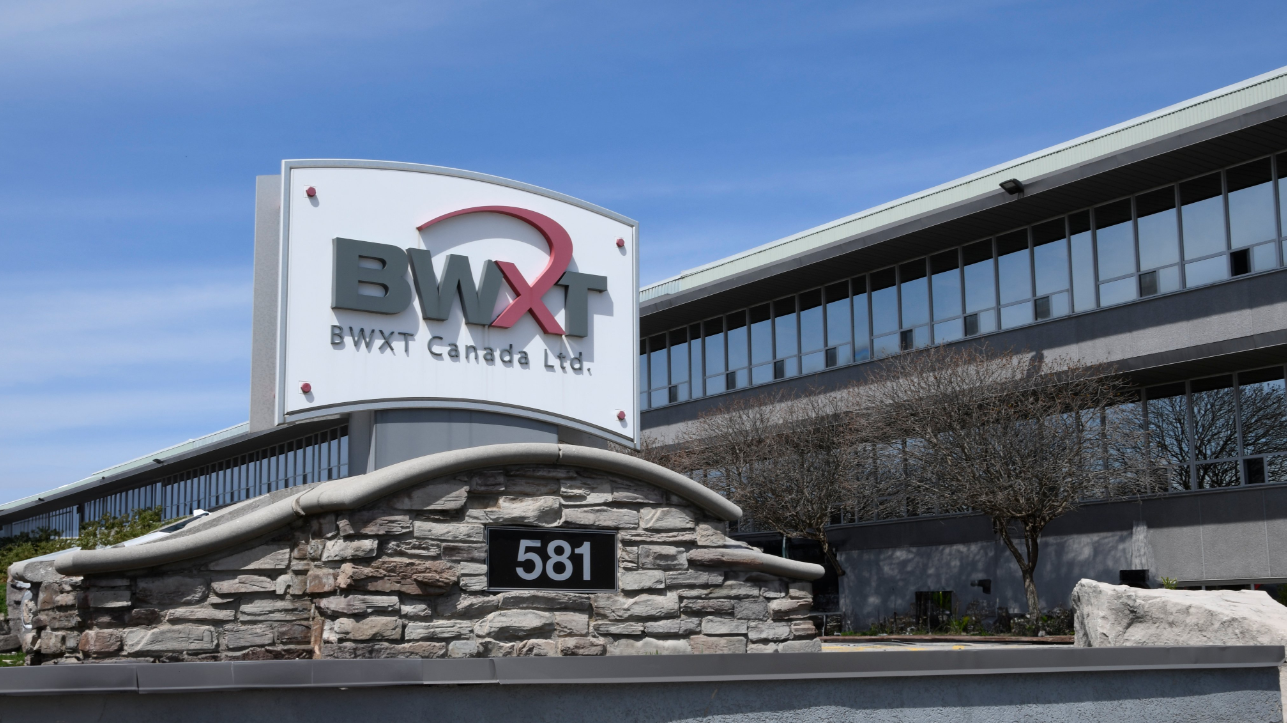

BWX Technologies (BWXT) in Cambridge is investing $80-million to expand their nuclear manufacturing plant in Cambridge.
Minister of Energy, Todd Smith, was in the city on Friday to join the company in the announcement.
The investment will create over 200 new skilled and unionized jobs. This is part of the province’s plan to expand affordable and clean nuclear energy to power the economy.
“With shovels in the ground today on new nuclear generation, including the first small modular reactor in the G7, I’m so pleased to see global nuclear manufacturers like BWXT expanding their operations in Cambridge and hiring more Ontario workers,” Smith said. “The benefits of Ontario’s nuclear industry reaches far beyond the stations at Darlington, Pickering and Bruce, and this $80 million investment shows how all communities can help meet Ontario’s growing demand for clean energy, while also securing local investments and creating even more good-paying jobs.”
The added jobs will support BWXT’s existing operations across the province as well as help the sector’s ongoing operations of existing nuclear stations at Darlington, Bruce and Pickering.
“Our expansion comes at a time when we’re supporting our customers in the successful execution of some of the largest clean nuclear energy projects in the world,” John MacQuarrie, President of Commercial Operations at BWXT, said.
“At the same time, the global nuclear industry is increasingly being called upon to mitigate the impacts of climate change and increase energy security and independence. By investing significantly in our Cambridge manufacturing facility, BWXT is further positioning our business to serve our customers to produce more safe, clean and reliable electricity in Canada and abroad.”
Investment
AI investments will help chip sector to recover: Analyst – Yahoo Finance
The semiconductor sector is undergoing a correction as interest rate cut expectations dwindle, prompting concerns about the impact on these high-growth, technology-driven stocks. Wedbush Enterprise Hardware Analyst Matt Bryson joins Yahoo Finance to discuss the dynamics shaping the chip industry.
Bryson acknowledges that the rise of generative AI has been a significant driving force behind the recent success of chip stocks. While he believes that AI is shifting “the way technology works,” he notes it will take time. Due to this, Bryson highlights that “significant investment” will continue to occur in the chip market, fueled by the growth of generative AI applications.
However, Bryson cautions that as interest rates remain elevated, it could “weigh on consumer spending.” Nevertheless, he expresses confidence that the AI revolution “changing the landscape for tech” will likely insulate the sector from the effect of high interest rates, as investors are unwilling to miss out on the “next technology” breakthrough.
For more expert insight and the latest market action, click here to watch this full episode of Yahoo Finance.
This post was written by Angel Smith
Video Transcript
BRAD SMITH: As rate cut bets shift, so have moves in one sector, in particular. Shares of AMD and Intel, both down over 15% in the last 30 days. The Philadelphia Semiconductor Index, also known as Sox, dropping over 10% from recent highs, despite a higher rate environment.
Our next guest is still bullish on the sector. Matt Bryson, Wedbush Enterprise Hardware analyst, joins us now. Matt, thanks so much for taking the time here. Walk us through your thesis here, especially, given some of the pullback that we’ve seen recently.
MATT BRYSON: So I think what we’ve seen over the last year or so is that the growth of generative AI has fueled the chip stocks. And the expectation that AI is going to shift everything in the way that technology works.
And I think that at the end of the day, that that thesis will prove out. I think the question is really timing. But the investments that we’ve seen that have lifted NVIDIA, that have lifted AMD, that have lifted the chip stock and sector, in general, the large cloud service providers, building out data centers. I don’t think anything has changed there in the near term.
So when I speak to OEMs, who are making AI servers, when I speak to cloud service providers, there is still significant investment going on in that space. That investment is slated to continue certainly into 2025. And I think, as long as there is this substantial investment, that we will see chip names report strong numbers and guide for strong growth.
SEANA SMITH: Matt, when it comes to the fact that we are in this macroeconomic environment right now, likelihood that rates will be higher for longer here, at least, when you take a look at the expectations, especially following some of the commentary that we got from Fed officials this week, what does that signal more broadly for the AI trade, meaning, is there a reason to be a bit more cautious in this higher for longer rate environment, at least, in the near term?
MATT BRYSON: Yeah. I think certainly from a market perspective, high interest rates weight on the market. Eventually, they weigh on consumer spending. Certainly, for a lot of the chip names, they’re high multiple stocks.
When you think about where there can be more of a reaction or a negative reaction to high interest rates, certainly, it has some impact on those names. But in terms of, again, AI changing the fundamental landscape for tech, I don’t think that high interest rates or low interest rates will change that.
So when you think about Microsoft, Amazon, all of those large data center operators looking at AI, potentially, changing the landscape forever and wanting to make a bet on AI to make sure that they don’t miss that change, I don’t think whether interest rates are low or high are going to really affect their investment.
I think they’re going to go ahead and invest because no one wants to be the guy that missed the next technology wave.
Investment
If pension funds can't see the case for investing in Canada, why should you? – The Globe and Mail
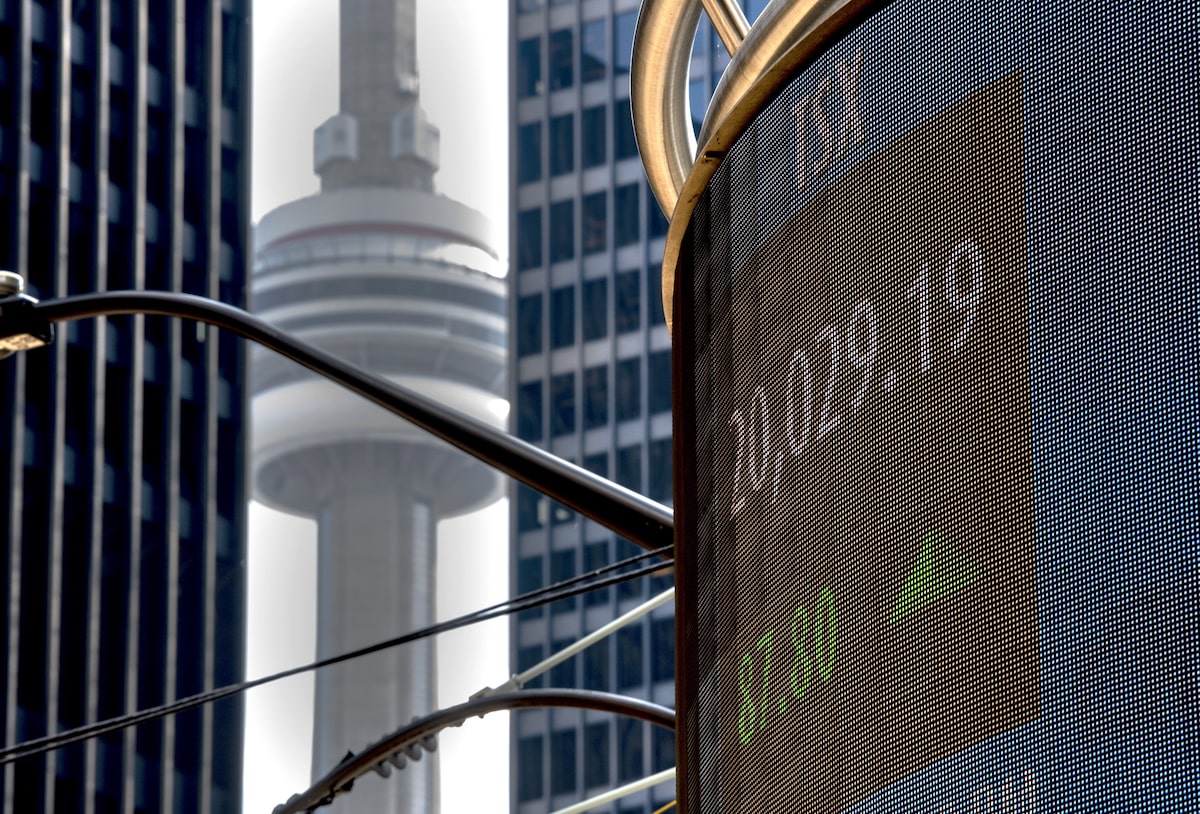

It’s time to ask a rude question: Is Canada still worth investing in?
Before you rush to deliver an appropriately patriotic response, think about the issue for a moment.
A good place to begin is with the federal government’s announcement this week that it is forming a task force under former Bank of Canada governor Stephen Poloz. The task force’s job will be to find ways to encourage Canadian pension funds to invest more of their assets in Canada.
Wooing pension funds has become a high-priority matter for Ottawa because, at the moment, these big institutional investors don’t invest all that much in Canada. The Canada Pension Plan Investment Board, for instance, had a mere 14 per cent of its massive $570-billion portfolio in Canadian assets at the end of its last fiscal year.
Other major Canadian pension plans have similar allocations, especially if you look beyond their holdings of government bonds and consider only their investments in stocks, infrastructure and real assets. When it comes to such risky assets, these big, sophisticated players often see more potential for good returns outside of Canada than at home.
This leads to a simple question: If the CPPIB and other sophisticated investors aren’t overwhelmed by Canada’s investment appeal, why should you and I be?
It’s not as if Canadian stocks have a record of outstanding success. Over the past decade, they have lagged far behind the juicy returns of the U.S.-based S&P 500.
To be fair, other countries have also fallen short of Wall Street’s glorious run. Still, Canadian stocks have only a middling record over the past 10 years even when measured against other non-U.S. peers. They have trailed French and Japanese stocks and achieved much the same results as their Australian counterparts. There is no obvious Canadian edge.
There are also no obvious reasons to think this middle-of-the-pack record will suddenly improve.
A generation of mismanagement by both major Canadian political parties has spawned a housing crisis and kneecapped productivity growth. It has driven household debt burdens to scary levels.
Policy makers appear unwilling to take bold action on many long-standing problems. Interprovincial trade barriers remain scandalously high, supply-managed agriculture continues to coddle inefficient small producers, and tax policy still pushes people to invest in homes rather than in productive enterprises.
From an investor’s perspective, the situation is not that appetizing. A handful of big banks, a cluster of energy producers and a pair of railways dominate Canada’s stock market. They are solid businesses, yes, but they are also mature industries, with less than thrilling growth prospects.
What is largely missing from the Canadian stock scene are big companies with the potential to expand and innovate around the globe. Shopify Inc. SHOP-T and Brookfield Corp. BN-T qualify. After that, the pickings get scarce, especially in areas such as health care, technology and retailing.
So why hold Canadian stocks at all? Four rationales come to mind:
- Canadian stocks have lower political risk than U.S. stocks, especially in the run-up to this year’s U.S. presidential election. They also are far away from the front lines of any potential European or Asian conflict.
- They are cheaper than U.S. stocks on many metrics, including price-to-earnings ratios, price-to-book ratios and dividend yields. Scored in terms of these standard market metrics, they are valued more or less in line with European and Japanese stocks, according to Citigroup calculations.
- Canadian dividends carry some tax advantages and holding reliable Canadian dividend payers means you don’t have to worry about exchange-rate fluctuations.
- Despite what you may think, Canada’s fiscal situation actually looks relatively benign. Many countries have seen an explosion of debt since the pandemic hit, but our projected deficits are nowhere near as worrisome as those in the United States, China, Italy or Britain, according to International Monetary Fund figures.
How compelling you find these rationales will depend upon your personal circumstances. Based strictly on the numbers, Canadian stocks look like ho-hum investments – they’re reasonable enough places to put your money, but they fail to stand out compared with what is available globally.
Canadians, though, have always displayed a striking fondness for homebrew. Canadian stocks make up only a smidgen of the global market – about 3 per cent, to be precise – but Canadians typically pour more than half of their total stock market investments into Canadian stocks, according to the International Monetary Fund. This home market bias is hard to justify on any rational basis.
What is more reasonable? Vanguard Canada crunched the historical data in a report last year and concluded that Canadian investors could achieve the best balance between risk and reward by devoting only about 30 per cent of their equity holdings to Canadian stocks.
This seems to be more or less in line with what many Canadian pension funds currently do. They have about half their portfolio in equities, so devoting 30 per cent of that half to domestic stocks works out to holding about 15 per cent of their total portfolio in Canadian equities.
That modest allocation to Canadian stocks is a useful model for Canadian investors of all sizes. And if Ottawa doesn’t like it? Perhaps it could do more to make Canada an attractive investment destination.
-
Media18 hours ago
DJT Stock Rises. Trump Media CEO Alleges Potential Market Manipulation. – Barron's
-
Media20 hours ago
Trump Media alerts Nasdaq to potential market manipulation from 'naked' short selling of DJT stock – CNBC
-
Investment18 hours ago
Private equity gears up for potential National Football League investments – Financial Times
-
Real eState10 hours ago
Botched home sale costs Winnipeg man his right to sell real estate in Manitoba – CBC.ca
-
News17 hours ago
Canada Child Benefit payment on Friday | CTV News – CTV News Toronto
-



 Sports23 hours ago
Sports23 hours ago2024 Stanley Cup Playoffs 1st-round schedule – NHL.com
-
Business19 hours ago
Gas prices see 'largest single-day jump since early 2022': En-Pro International – Yahoo Canada Finance
-
Art22 hours ago
Enter the uncanny valley: New exhibition mixes AI and art photography – Euronews




